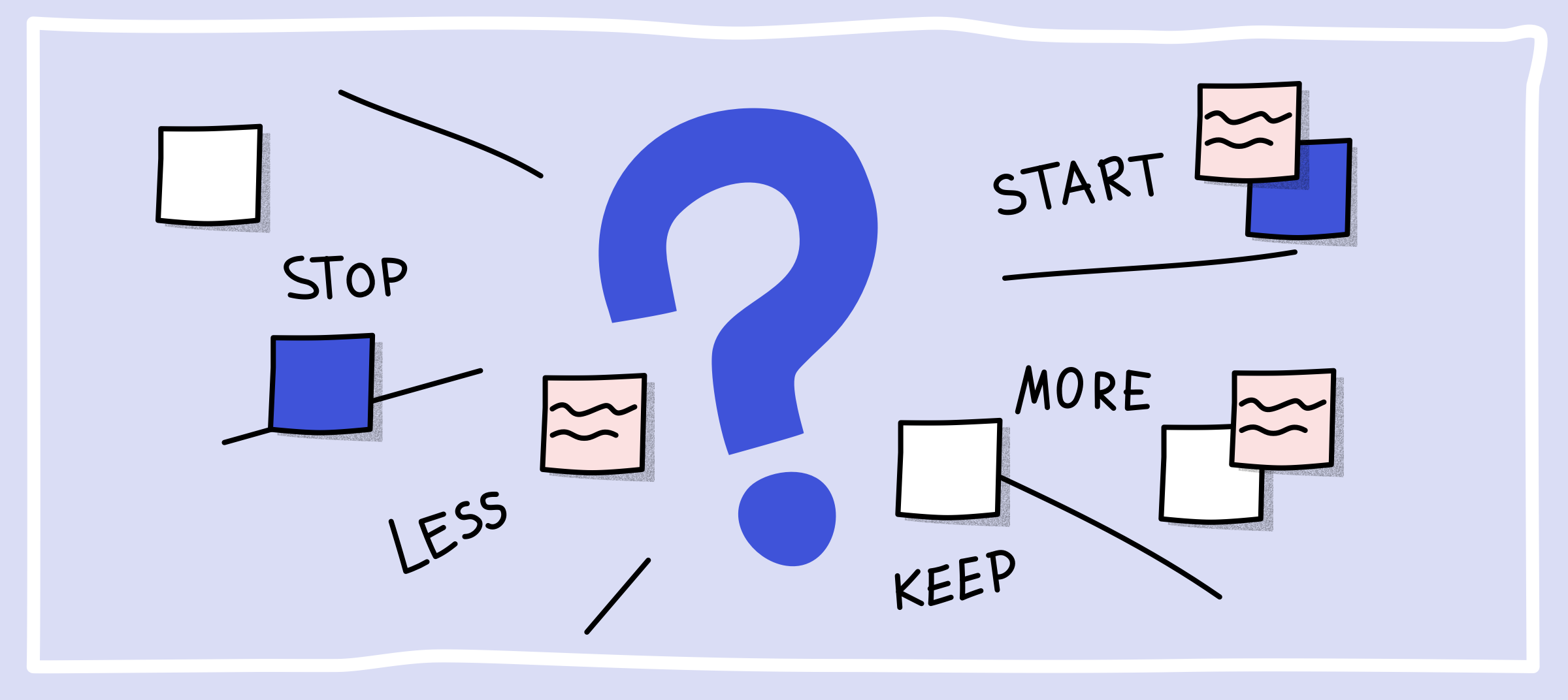Earlier today a colleague asked me how I facilitate a Sprint Retrospective. It was her first sprint in the role of Scrum Master and in that sense also her first Retro.
Back to the theory for a moment. The Scrum Guide describes the Sprint Retrospective as follows:
“The Scrum Team inspects how the last Sprint went with regards to individuals, interactions, processes, tools, and their Definition of Done. Inspected elements often vary with the domain of work. Assumptions that led them astray are identified and their origins explored. The Scrum Team discusses what went well during the Sprint, what problems it encountered, and how those problems were (or were not) solved.”
I must admit that I had to think carefully about how I would facilitate such gatherings. Previous Sprints that I have been able to lead have all gone extremely well, with a positive atmosphere and enthusiastic Developers and Product Owners.Normally I won’t go any further than asking around the questions “What went well? What can be done better? How could it be done better?”.

However, as the conversation with my colleague progressed, I tried to consider how one should position oneself as a Scrum Master within such a Scrum Event. The Scrum Master is a facilitator. I have a few takeaways from my own experiences that might help you facilitate a good retrospective.
1. Set the tone
C’est le ton qui fait la musique: the music is created by the tone. Whatever happened during a Sprint, a lot of work was completed. That is always something positive to emphasize. An increment is delivered through close collaboration between the Product Owner and the Developers (and often the stakeholders as well). You don’t have to make the mood brighter than it is, but giving feedback from a positive mindset is preferable to giving feedback from a negative one. Break the ice at the Sprint Retrospective with a positive ice-breaker!
2. (Transparent) reporting
Although it is not the Scrum Master’s responsibility to take minutes (after all, you are not a secretary!), it is useful to record the Sprint Retrospective results for the next Sprint(s). If you don’t take these minutes yourself, perhaps someone else will (but make sure someone does!). Also, distribute the report to all participants: make the outcomes as transparent as possible!
3. Make the solution as specific as possible
When identifying problems, it is good to find out what the actual underlying problem is. In both “Mastering Professional Scrum” (Ockerman & Reindl) and “Scrum Insights for Practitioners: The Scrum Guide Companion” (Doshi), the Five Whys technique is mentioned as a useful questioning technique. It is an iterative interrogative technique used to investigate the cause-and-effect relationships that underpin a specific problem. The technique’s primary goal is to determine the cause of a defect or problem by asking “Why?” up to five times.
If a problem can lead to a solution (for example, specific action points), then also include this in the reporting.
4. Stay objective
My personal pitfall is that as a Scrum Master, I frequently have strong feelings about the product or the process. When combined with my (sometimes dominant) role in conversations, my first reflex is to respond directly. During a Sprint Retrospective, I’ve learned to act as a facilitator rather than a participant in recent years. Consider this: you are the person who asks the questions, not the person who provides the answers.
5. Stay creative
There are several ways to conduct a Sprint Retrospective. I’ve seen many ways come along: from asking questions using colored M&Ms to imagining the sprint as a sailboat in Miro. I recently experimented with assessing personal learning objectives during the Sprint and Sprint Retrospective (more on that later). What I mean is that each team reacts differently to each method. Allow yourself the freedom to experiment! In addition to gaining experience and developing best practices for yourself, this provides the Scrum Team with a nice variation in this recurring Scrum Event!
Values and principles
When discussing Scrum Events, one thing that always comes to mind is the Scrum Master’s awareness of how the events contribute to empirical process control and the embodiment of the Scrum Values.
In the following ways, the Sprint Retrospective can embody the Scrum Values:
- Commitment
- Encourage team members to actively participate in the Retrospective and make commitments to improvements for the next Sprint;
- Focus
- During the Retrospective, focus on identifying and discussing areas of improvement related to the previous Sprint;
- Openness
- Foster an environment where team members feel comfortable sharing their thoughts and ideas openly and honestly;
- Respect
- Ensure that everyone’s opinions and suggestions are heard and respected. The Scrum Master should encourage active listening and constructive feedback;
- Courage
- Encourage team members to be brave and bring up sensitive or difficult topics for discussion during the Retrospective.
The Sprint Retrospective appeals to the three pillars of Empiricism by:
- Transparency
- Encouraging team members to openly share their thoughts and experiences during the sprint helps increase transparency and understanding of the team’s progress and challenges;
- Inspection
- By regularly reflecting on their work and performance, the team can identify areas for improvement and make decisions based on empirical data;
- Adaptation
- The outcome of the event is to identify and make improvements for the next Sprint, demonstrating how the team is adapting based on their empirical experiences.
